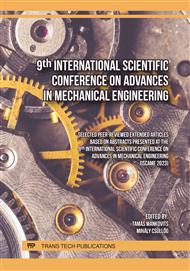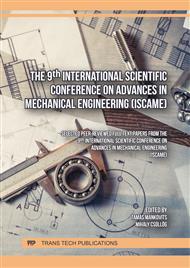p.23
p.31
p.39
p.47
p.55
p.65
p.79
p.89
p.99
Investigation of Heavy Vehicle Underrunning Guard Focusing for the Energy Absorbing Issue
Abstract:
The consequences of rear-end collision with a heavy vehicle could be significantly high risky, and the likelihood of the serious personal injury is notable high. The importance of an under-running guard is to increase the occupants survive and reduce the technical and personal injury. The lack of RUPD (Rear Underrun Protection Device) could involve fatal situations regarding to the occupants of the rear impacted personal car, therefore the application of this guard is not arbitrary option due to the strict national safety regulations. Analyzing the role of RUPD the distinction is made between two main functions. Due to the notable clearance between the floor height of the rear and the road, at the case of rear impact the cockpit of the personal car could be essentially abolished. The second expected function of RUPD to absorb impact energy as much as possible. The development a new RUPD or an improvement of recent one could be complex engineering task, since the absorbing ability and the proper strength requirement call for frequent contrast conditions during the construction designing. Taking into consideration of requirements of weight optimization the complexity of the designing could be even more complicated. One of the most ideal impact energy absorber could be the aluminium foam. Recent study investigates the ways to improve the amount of absorbed energy by the closed-cell aluminium foam using radial constrain during the compression. The second half of the study introduces a finite element analyses research related to the folding behavior of thin walled structures (crashbox) as energy absorber. By structures is analyzed and compared by the peak force at the moment of impact, the folding force fluctuation and the amount of absorbed energy.
Info:
Periodical:
Pages:
79-87
Citation:
Online since:
July 2024
Authors:
Price:
Сopyright:
© 2024 Trans Tech Publications Ltd. All Rights Reserved
Share:
Citation:



